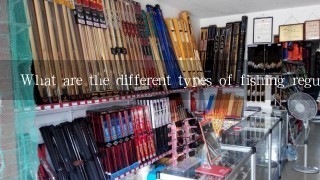What are the different types of fishing regulations that are in place in Washington?

Washington has a diverse and comprehensive set of fishing regulations designed to protect fish stocks, maintain healthy ecosystems, and ensure sustainable fishing practices. These regulations include:
1. Bag and Size Limits:
- Daily bag limit: The number of fish a person can catch in a day.
- Size limit: The maximum length or weight of a fish that can be kept.
2. Gear Restrictions:
- Types of gear that can be used: Restrictions on the type of gear that can be used to catch fish.
- Size limits: Restrictions on the size of certain types of gear.
3. Closed Seasons and Areas:
- Seasonal closures: Certain areas or times of day are closed to fishing.
- Closed areas: Specific areas, such as marine sanctuaries or critical habitat, are closed to fishing.
4. Catch Limits:
- Daily catch limits: The number of fish a person can catch in a day.
- Possession limits: The maximum number of fish that can be possessed at any given time.
5. Minimum Size Limits:
- Minimum size: The minimum length or weight of a fish that must be kept.
6. Angler Education and Licensing:
- Angler education programs: Organizations provide information and training on responsible fishing practices.
- Angler licensing: Some species require licensing to be caught or possessed.
7. Sport Fish Regulations:
- Special regulations for specific fish species, such as salmon, trout, and steelhead.
8. Commercial Fishing Regulations:
- Gear restrictions: Restrictions on the type and size of gear used by commercial fishers.
- Size limits: Size limits on certain fish species caught for commercial purposes.
9. Marine Protected Areas:
- Marine sanctuaries: Areas where fishing is prohibited to protect sensitive marine ecosystems.
- National marine monuments: Areas managed by the National Oceanic and Atmospheric Administration (NOAA) for conservation and research purposes.
10. Water Quality Regulations:
- Water quality standards: Regulations to protect water quality and fish habitat.
These regulations are designed to ensure the sustainability of fish stocks, protect sensitive habitats, and provide opportunities for recreational fishing.
































































